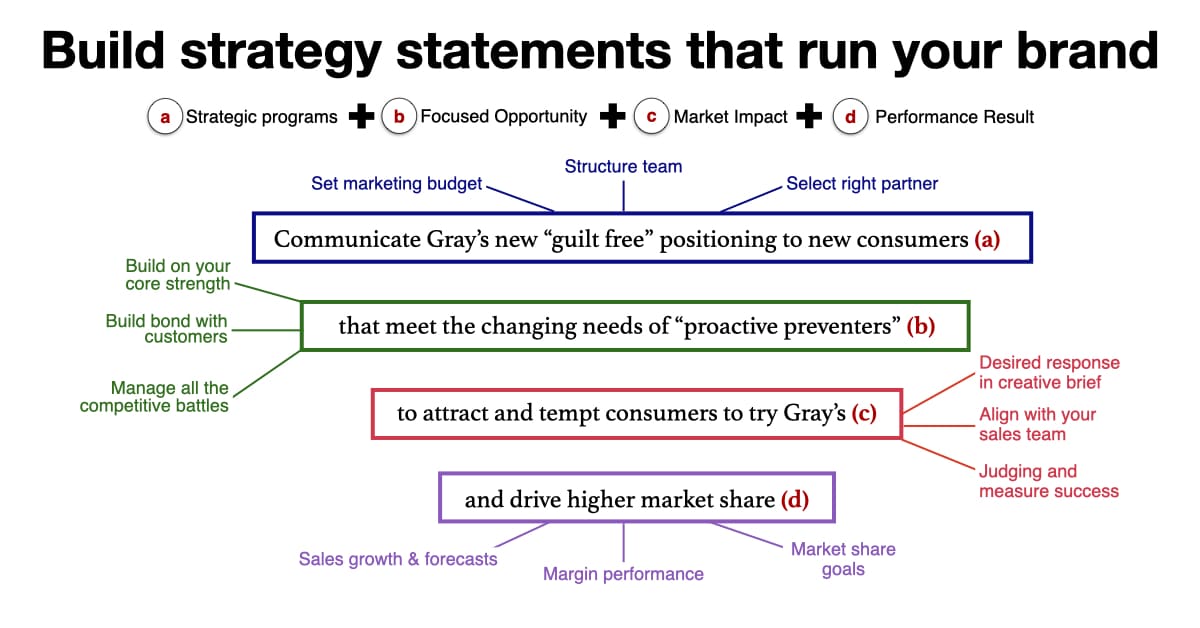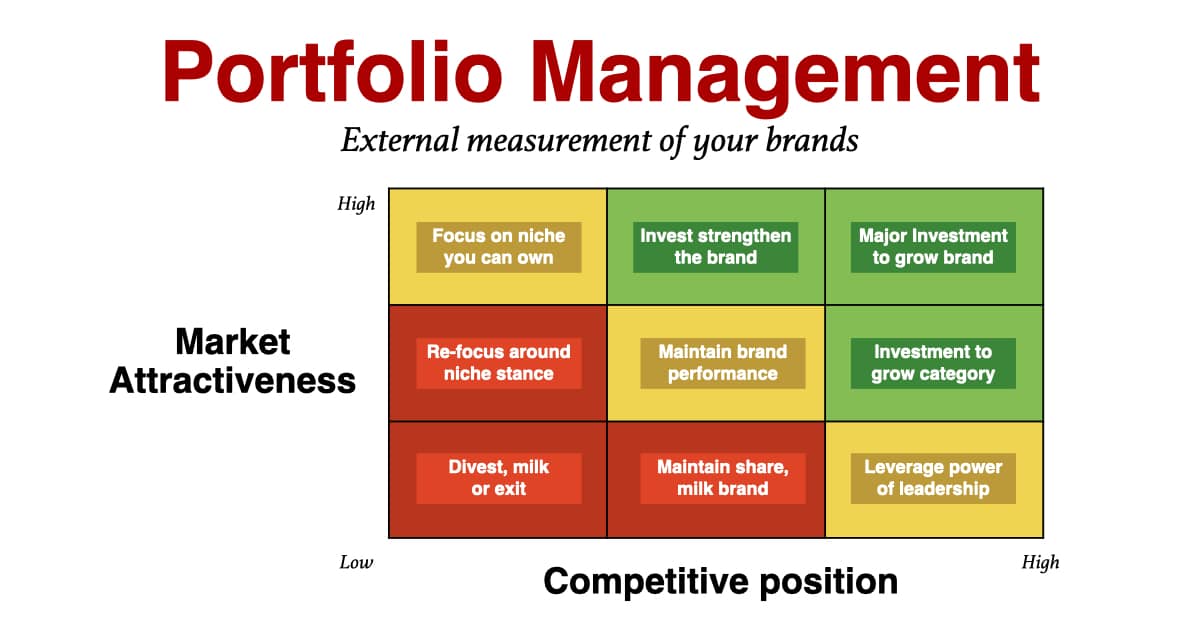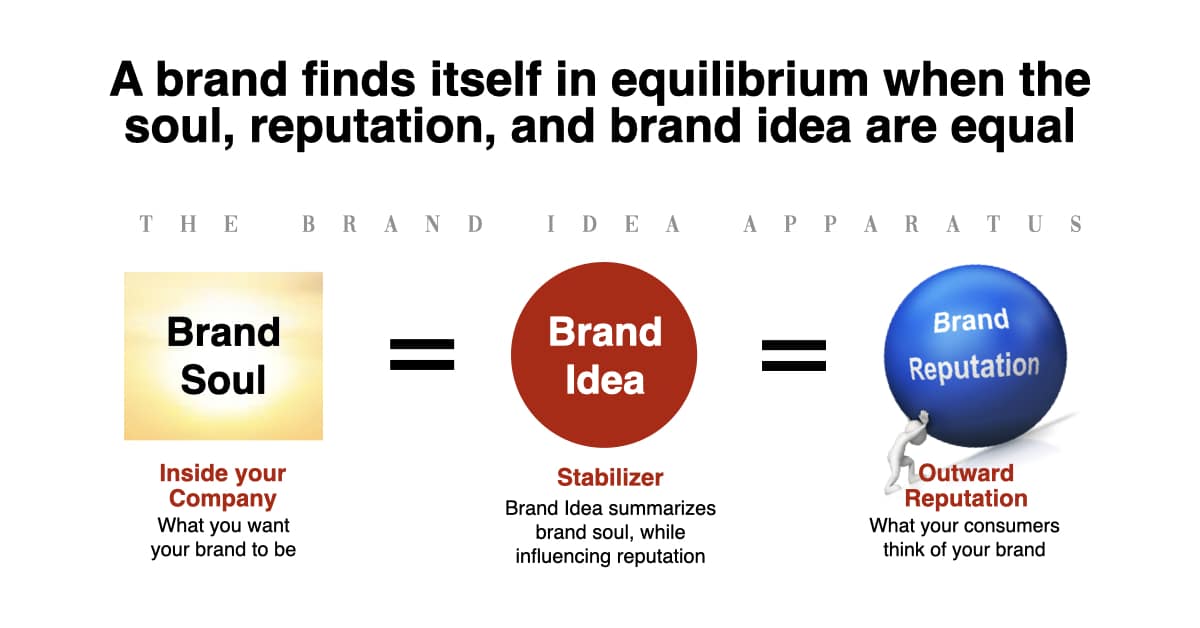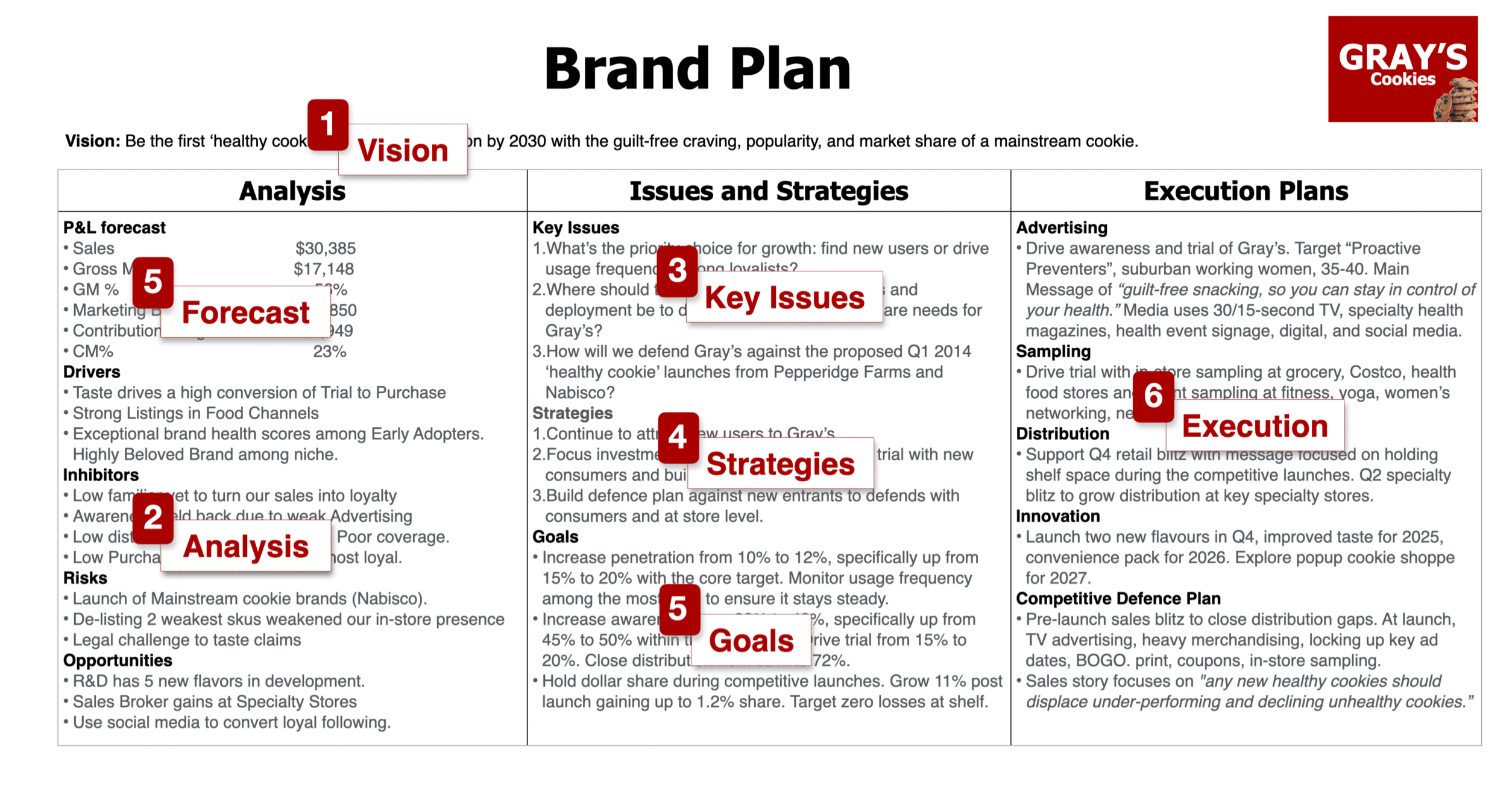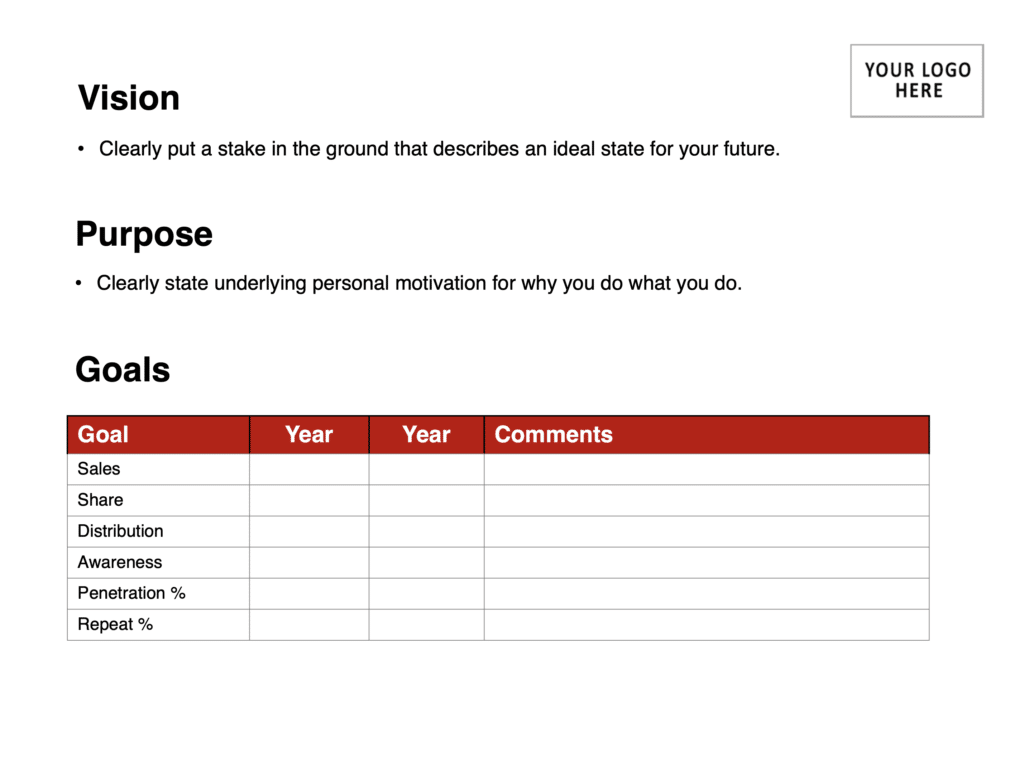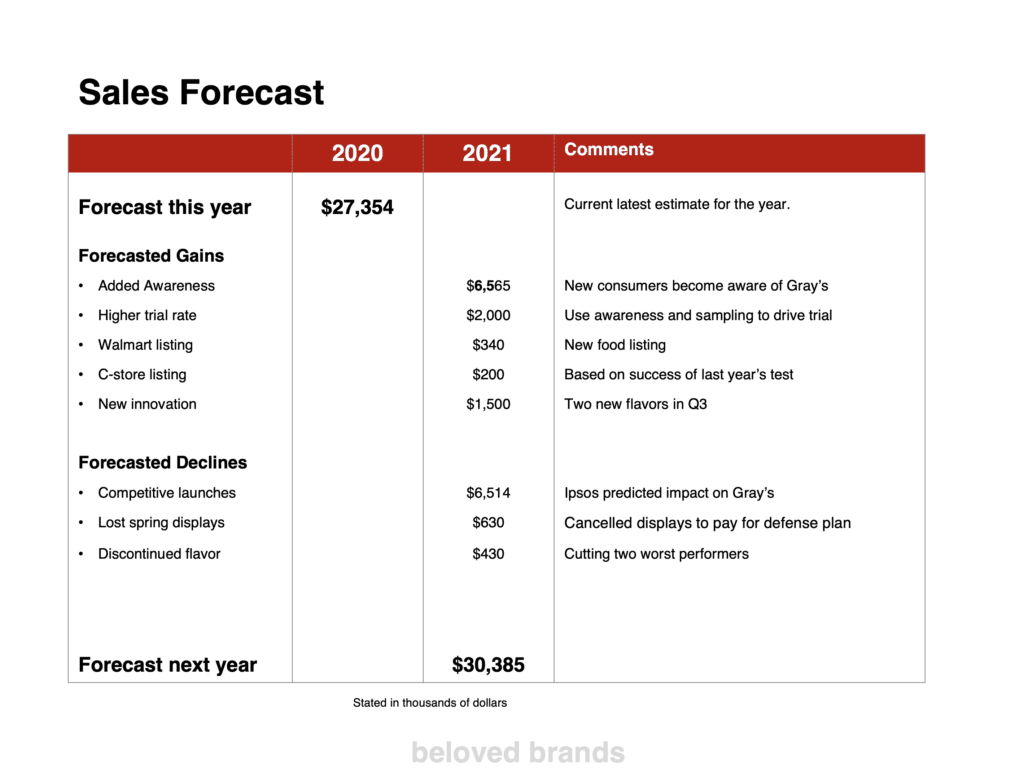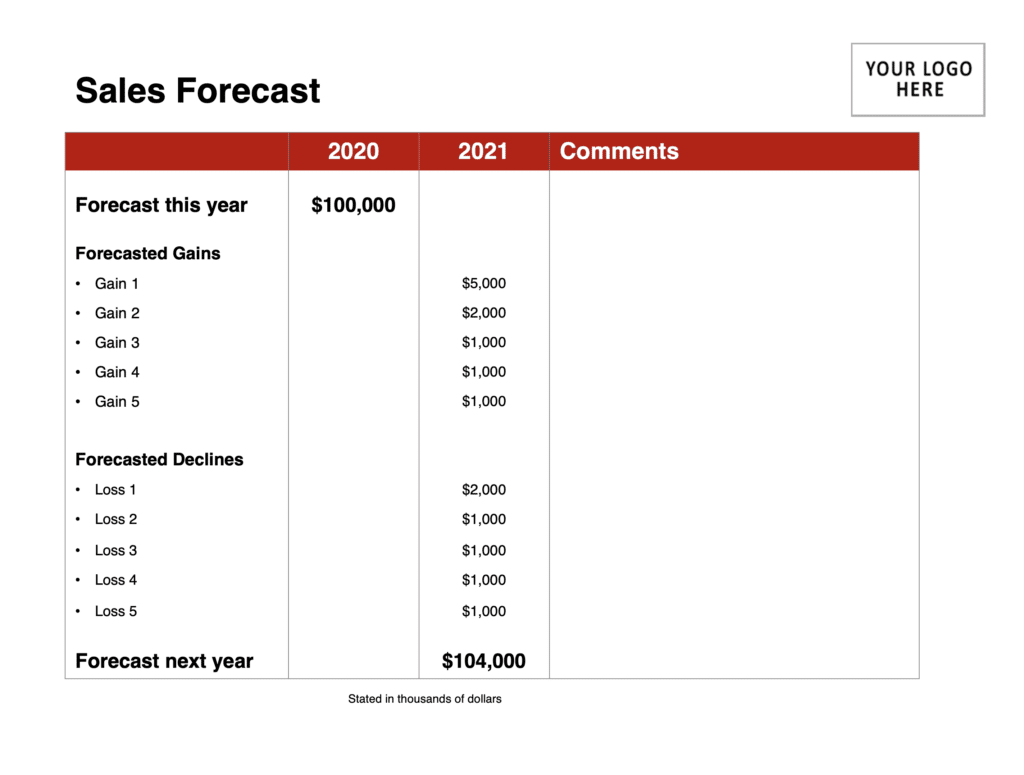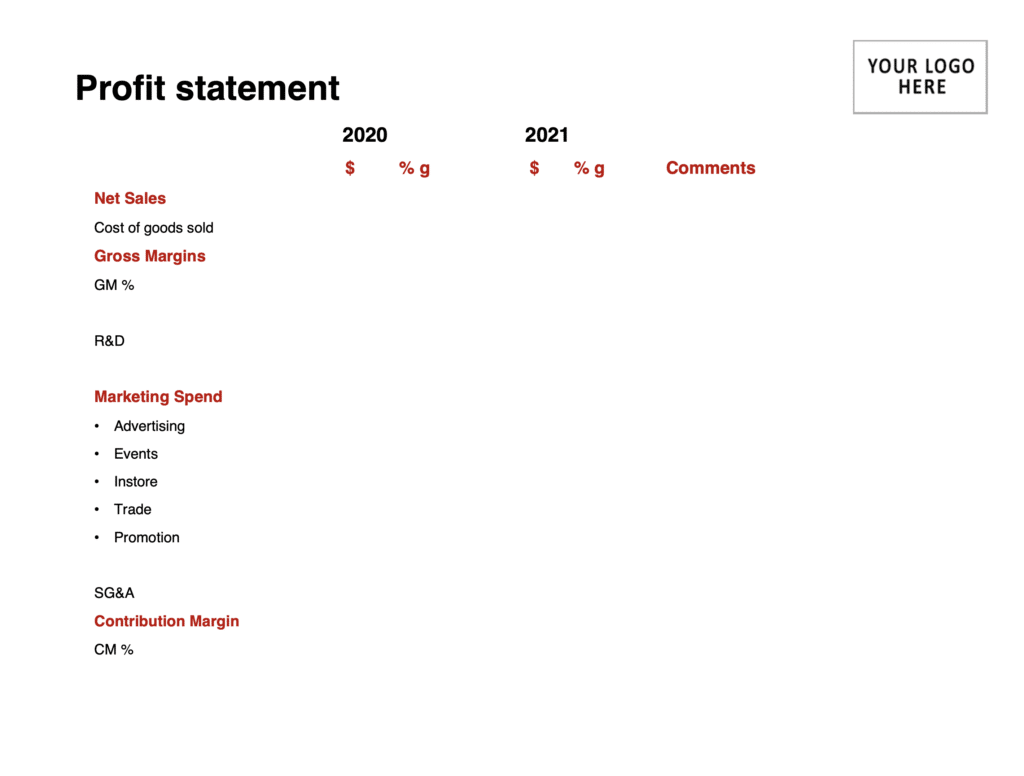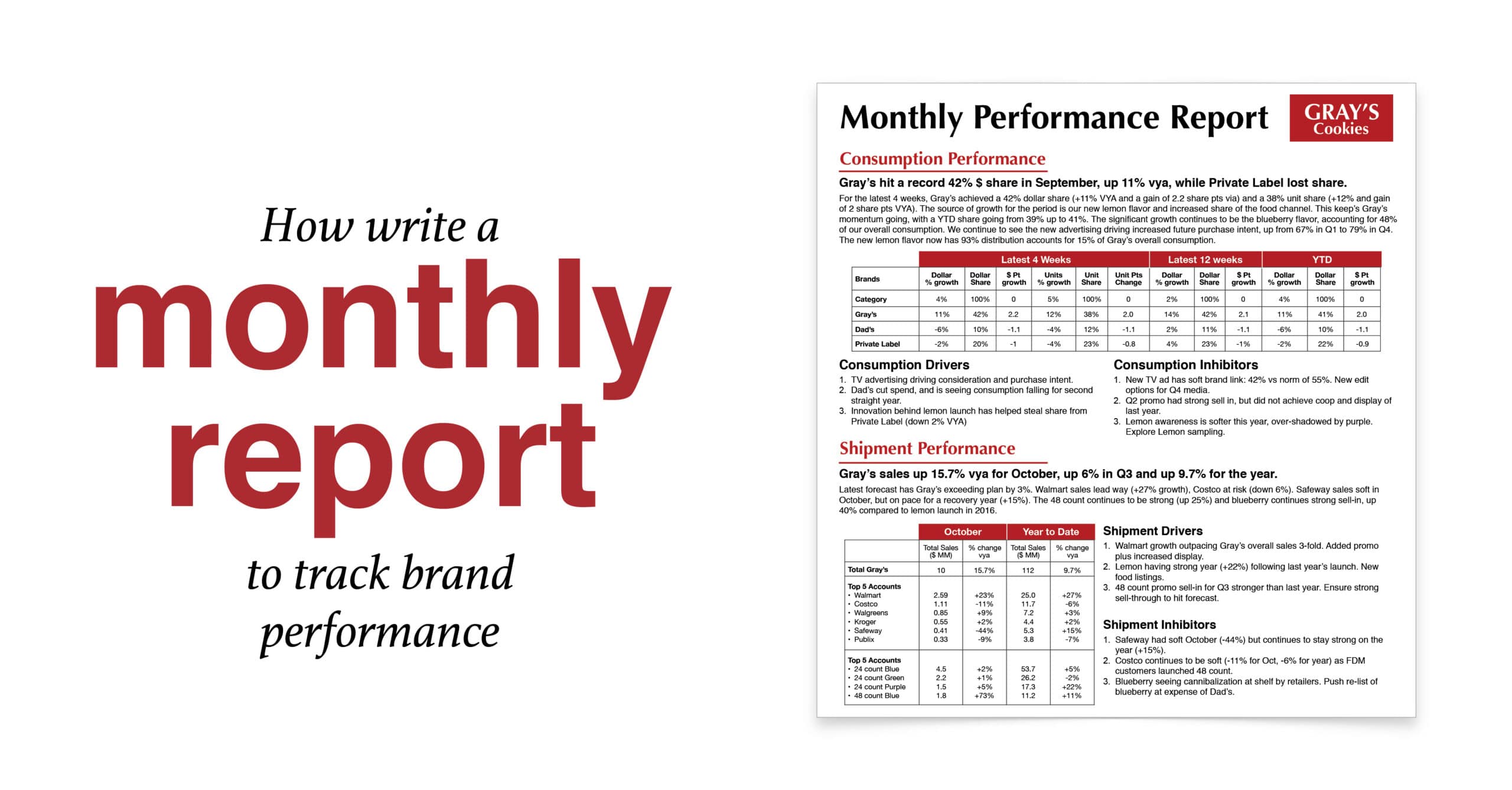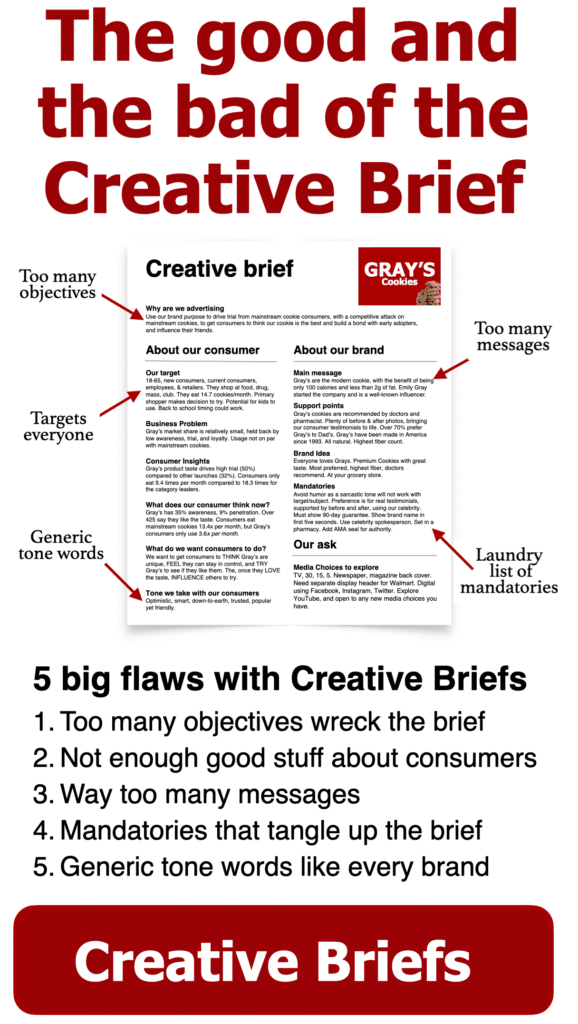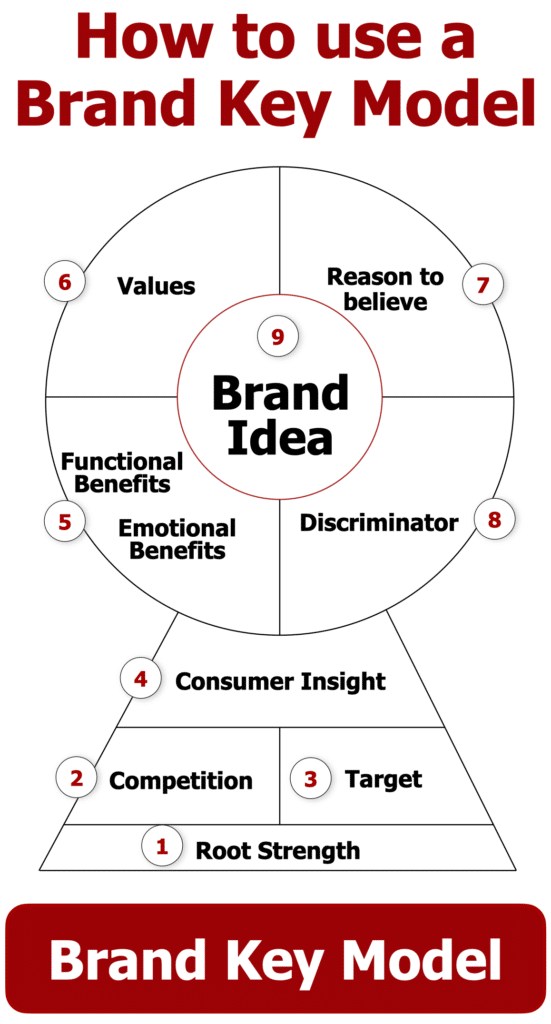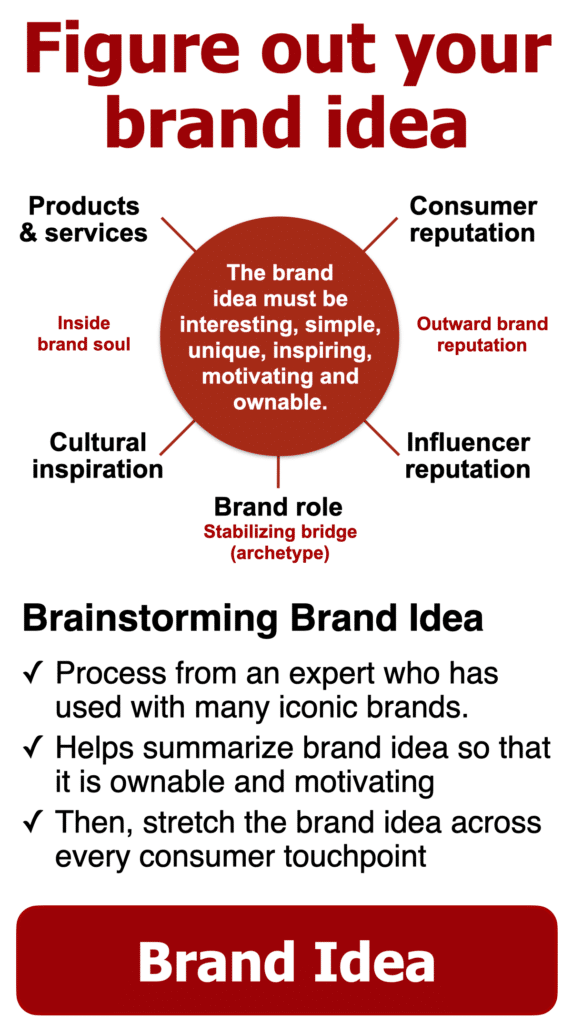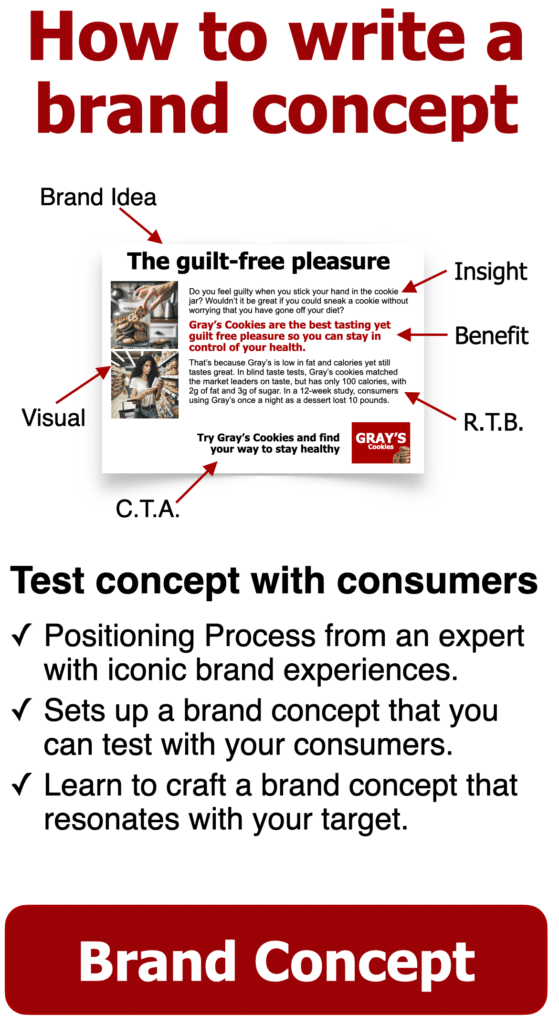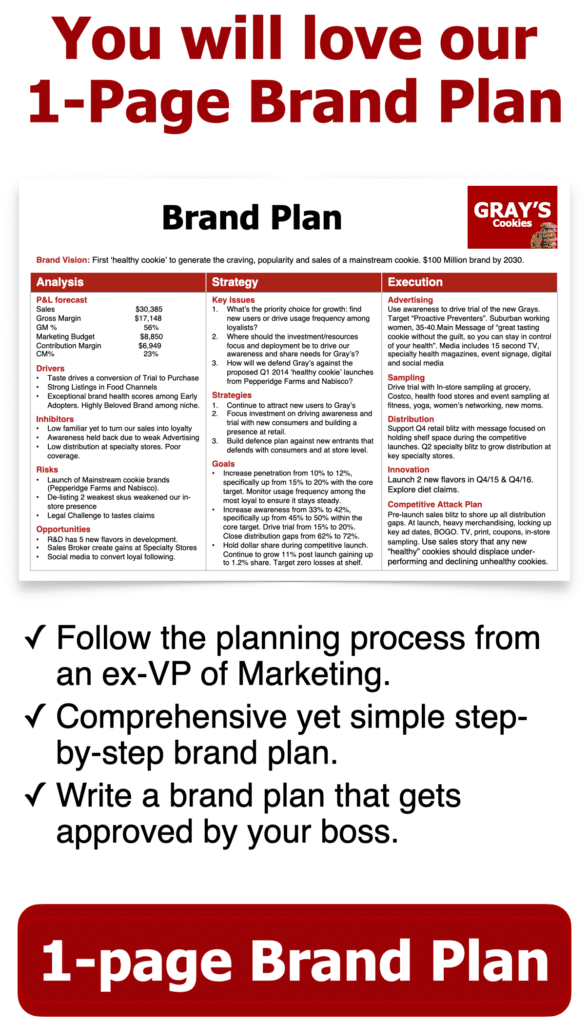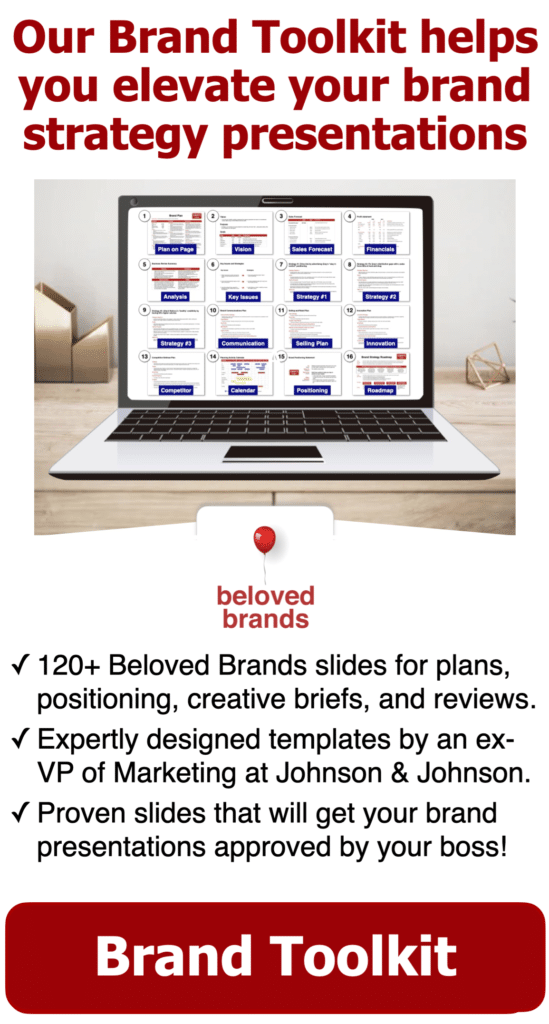Writing goals are an essential part of running your business. We usually achieve what we think we can achieve. Your goals should have a balance of stretch and reality. In short, use your brand vision to push a little beyond your comfort level and achieve beyond what you expect. You will hear the term smart goals. Essentially, S. M. A. R. T. is an acronym that means specific, measurable, achievable, relevant, and time-bound.
Goals allow marketers to focus on a future state, whether for the next calendar year or 3 to 5 years from now. Indeed, how you write goals should motivate everyone on the team and keep them focused and aligned to deliver the brand’s strategies.
Align your goals with brand strategy statements.
Make sure that you have a plan to achieve your goals. You must consider what steps you need to take to reach your goal. It is easy to forget these steps once you have set your goal. Could you make sure you have a clear idea of what needs to happen next?
Below, you will see how we write our brand strategy statements, which you can use to run your brand. We use the A + B + C + D approach. Essentially, the brand strategy statement should consist of the strategic program (A), focused opportunity (B), market impact (C), and performance result (D). When writing goals, focus on the C and the D, specifically the market impact and performance result.
To illustrate, click on the chart above to zoom in.
Focus your goal on the ideal strategic outcome.
First, you should have a write goals that measures the market impact of your brand strategy. For instance, set goals that measure how you will move consumers along their purchase journey. In short, look at scores related to awareness, consider, search, purchase, repeat, loyalty, or a measure of brand advocacy.
Second, write goals related to the performance result of your intended brand strategy. For example, you could write goals that measure brand power in the relationship with consumers, retailers, employees, channels, suppliers, or media partners. Alternatively, write goals related to brand wealth, sales, share, costs, pricing, or the overall profit.
To illustrate, click on the goals above.
Write goals that explain the tactical execution.
Above all, with tactics, write goals related to how you will attract, inform, close, service, and delight your consumers as they move through their purchase journey.
For example, write goals related to advertising to include attention, brand link, main message communication, and stickiness. Measure the impact of the advertising by looking at reputation, image, or a measure of the last five purchases.
Never chose goals that you can simply pay for. For instance, 2000 GRPs is not a goal, since you buy that.
To illustrate, click on the chart above to zoom in.
Write goals for your product innovation.
Equally, writing goals related to innovation include a freshness index. It is the percentage of your portfolio launched within the past two years. Also, include the ideas at each stage of the innovation process.
To illustrate, click on the new product innovation pipeline to zoom in.
Write goals to manage your portfolio.
Finally, when managing a portfolio, focus your goals on measuring the category’s attractiveness, market share, sales growth, and profitability of each business.
To illustrate, click on either chart above to zoom in.
Use goals to to manage your brand reputation.
Write goals related to brand reputation, including net promoter score, online review scores, consumer playback of the desired brand positioning, or influencer reputation. We use a brand idea to manage the brand reputation.
To illustrate, click how the brand idea drives the brand reputation.
Use milestones to write goals for major projects.
Major project milestones include completion dates related to new product launches and significant investments related to new technologies, operations, customer experience, or company culture.
Likewise, write goals related to in-store performance with indicators related to display, pricing, the share of shelf, and distribution coverage. Moreover, write goals broken out by geography, channel, or specific customers.
Once you have your goals, you can create a dashboard to track those goals, while enabling everyone on the team to see how you are doing.
To illustrate, click the dashboard of goals above.
Write down your business goals.
Goals need to be part of the planning process.
Writing goals for your business should be part of the brand planning stage. Notably, the goals should align with the beginning of every year and tie into the company’s performance system. As a result, the goals should cascade to each team member so that everyone has clear expectations for everyone on the team.
Below is our one-page Brand Plan template that includes a P&L forecast in the analytics. As well, the goals show up in the issues and strategies section.
To illustrate, click on the brand plan above and you can zoom in to see the goals.
Explore how business goals show up in the plan.
Moreover, your business plan should include a brand dashboard with goals linked to financial performance (sales, margins, profit), brand health measures (market share, awareness, trial, repeat, loyalty), and execution performance tracking (advertising, innovation).
Brand Plan template for the vision, purpose, goals.
To illustrate, click on the brand plan above and you can zoom in to see the vision, purpose, and goals.
Brand Plan template for the sales forcast.
To illustrate, click on the brand plan above and you can zoom in to see the sales forecast.
Brand Plan template for the profit statement.
To illustrate, click on the brand plan above and you can zoom in to see the profit statement.
S.M.A.R.T. goals
Writing S.M.A.R.T. goals.
As the phrase goes, measure what matters. Indeed, a good business plan lays out key measurements and controls. For instance, the brand plan should include the dashboard of smart goals, marketing budget, sales forecast, and profit statement.
So let’s make sure you write smart goals.
Specific:
To start, state precisely what you want to accomplish, including who, what, where, when, and why. To clarify, when looking at the market impact results, use specific numbers for share, program tracking, brand funnel data, retail performance metrics, the voice of the consumer, and product rating scores.
Likewise, use specifics when describing the financial business results, including sales, margin, spending, and profit. Look at the results as significant milestones that move the brand towards your stated brand vision.
Measurable:
How will you demonstrate and evaluate how much you have met the smart goal? Namely, write goals relative to last year, category norms, competitors, or milestones towards the end goal.
Achievable:
Make sure the smart goal is achievable in achieving the outcome. Yet, push the goal with a bit of a stretch.
Relevant:
Link each specific smart goal to a brand strategy or marketing execution where you are investing. Align the goal to your vision. For instance, think of each year’s goal as a milestone on the way to the vision.
Time-bound:
Write smart goals with a “by when” date linked to significant milestones or deadlines. With this in mind, break out the goal in terms of quarterly, annually, or over a 5-year time horizon. Put a stake in the ground for specific deadlines for major spending projects. For instance, include significant investments in advertising, operations or production schedules, market timing, or new product launch dates.
Review your progress regularly
Use a monthly report to track progress against your goals.
If you are going to write goals, then you must keep track of your progress. Every business should have a monthly report to track how the business is doing throughout the course of the year. While these reports may feel tedious to write, the 3-4 hours it takes to dig in is a great discipline to help you maintain the touch-feel of managing the business results.
Clearly, the monthly report helps steer everyone who works on the brand. For instance, the monthly report helps everyone stay on track and deliver the commitments of the annual plan. Moreover, include a consumption section and a shipments section.
What’s driving growth?
Keep track of the top three drivers of your brand growth. Indeed, look at consumption trends (e.g. by product sku, regions, channel, account, flavor, etc.), explanations of brand funnel scores, program results, retail challenges, or competitive moves. Include plan for how you are going to continue these drivers.
What’s inhibiting growth?
Then, look at the top three inhibitors of growth. For instance, these inhibitors explain the weaknesses or friction you are seeing in your marketing programs, distribution gaps, competitive moves, or changes in consumer behavior. Moreover, outline a plan to counter these inhibitors. Finally you need to assure senior management that you are on top of running the business.
To illustrate, click on the monthly report above.



